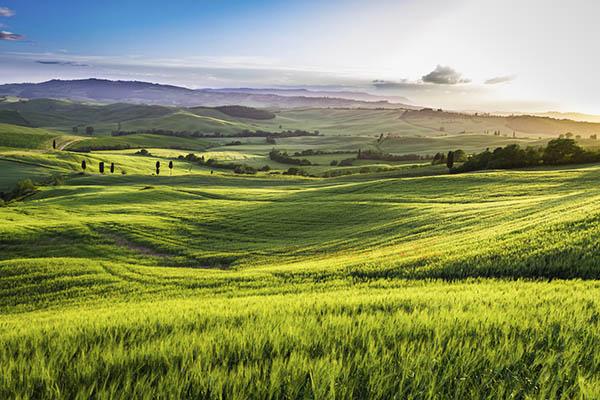In the world of turf seed, you'd think grass grows on trees.
 Hardly. At least not the cool-season varieties hailing from the Pacific Northwest.
Hardly. At least not the cool-season varieties hailing from the Pacific Northwest.We caught up with Jacklin Seed's Chris Claypool at the Golf Industry Show, who shed some light on seed history, quality and shortages.
"There are so many choices now. It's almost confusing to the end user," said Claypool, general manager for Jacklin Seed by Simplot. "There are some elite Kentucky bluegrass varieties, but those elite varieties don't have prolific seed yield.
"People don't ask much for a specific variety. They just want seed."
One of the biggest factors affecting Kentucky bluegrass varieties, Claypool said, is the absence of field burning.
Torching fields after the annual harvest helped control weeds and pests before the next growing season, and thus minimized the need for chemical pesticide applications.
"It shocks the plant into survival mode to reproduce," Claypool said.
"It cleaned up the fields, farmers saved money and they didn't have to till, spray and replant the field. There were some bluegrass fields in the Willamette Valley that hadn't been sprayed in 20 years."
Field burning also caused concerns about air quality, and it is a practice that has been largely banned on grass fields since 2009.
The effects of that ban are finally starting to trickle down, Claypool said.
"Today, we are realizing the cost of not burning," Claypool said. "Quality is eroding and getting a little worse every year. The impact of not being able to burn every year and clean up those fields, we're now paying the price. The fields are getting dirtier and dirtier every year."
That's unfortunate, says Claypool, in an era when so many turf varieties can help end users like golf course superintendents save money by choosing grasses that can stand up to stressors like drought, heat, cold and wear.
Combine an increasingly weakened field with naturally occurring factors like weather, and the result can be long-term decline in quality and yield.
Complicating matters even further is that, unlike with food crops, growers cannot insure a turf crop against loss. And that is leading some growers in the Willamette Valley to choose crops that make more economic sense.
"That makes it like a high-risk crop," Claypool said. "People are coming out of school with business degrees and realize they can make more money growing something else.
"Just in Oregon, thousands of acres have gone out to blueberries, hazelnut orchards and wineries. When you lose them, they're gone for 40-plus years. You don't get those fields back."
Cultivating Kentucky bluegrass became a viable commercial option in the late 1940s when golf course superintendent Joe Valentine discovered a patch of turf outperforming the common Kentucky bluegrass at Merion Golf Club near Philadelphia. The new grass was named Merion and is the forerunner to many of today's commercial varieties.
"The quality, possibly, will never get better in the future of grass seed," Claypool said. "The future of zero weed, no Poa annua, no noxious weeds in fields is going to be more and more difficult. Either prices will go up as growers have to apply more chemicals, or we'll have to live with what is harvested."

